Podcast: Play in new window | Download (Duration: 33:08 — 41.3MB)
Subscribe: Apple Podcasts | Google Podcasts | Spotify | Amazon Music | Android | Pandora | iHeartRadio | JioSaavn | Podcast Index | Email | TuneIn | RSS | More
By Davy Crockett
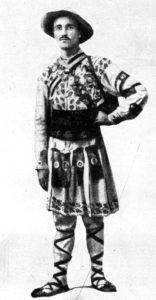

Beginning about 1904, a new twist emerged. A few of the globetrotters claimed that they were part of a race or competition with others to be the first to circle the globe on foot within a certain period. Such a competitive event created a stir of interest when walkers came into town. Wow, it sounded like the modern-day “Amazing Race” reality show.
One common thread involving these race claims was that they were organized by the “Touring Club de France.” Did this organization really get involved in Pedestrian races? One participant in such a race was a famous Romanian globetrotter, Dumitru Dan. Numerous articles about him in recent years claim that he was the first person to walk around the world and he is considered a Romanian local hero. Was he truly a participant in a race and did he really walk 62,000 miles around the world as he claimed? For the first time, this will be examined closely. First, I will analyze carefully Dumitru Dan’s walking story which he sadly fabricated. It was not true. Then I will examine the similar false race tales of others.
| The story of Dumitru Dan and other globetrotters is told in the new book by Davy Crockett, Around the World On Foot: The Early Globetrotters. |
The Touring Club de France


Dumitru Dan – Romanian globetrotter
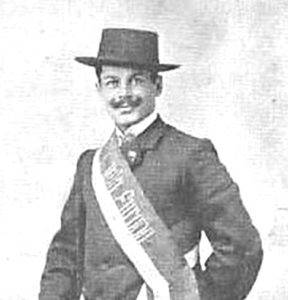

I realize that some people will not be happy with my story and its analysis. For all the dozens of “around the world on foot” walkers I’ve analyzed, I first assume they are legitimate, and then analyze the evidence left behind, trying to prove that they were authentic efforts. I treated this story carefully, realizing it is about a recognized hero. Prepare yourself, most of his story was fiction.
The Touring Club de France competition
Dumitru Dan claimed in his story given decades later that in 1908, the Touring Club de France announced a six-year “around the world on foot” race with a prize of a staggering 100,000 francs (about a half million dollars in present-day value). He said that it created wide international excitement. As the previous Touring Club claims, no evidence has been found that such a race was actually organized by the club. No announcements about this race have been found in French, British, or American newspapers. Years later, Dumitru Dan likely copied this race idea involving the Touring Club from the other globetrotter fictional stories. It was a creative reason to globe trot around the world. (We will see later that he gave a very different reason for walking to the newspapers while in America. He never mentioned being part of a race).
Dan claimed that the participants were to start from the capitals of their home country, get their itinerary approved ahead of time, and support themselves along the way. He said there were 200 people who entered and started. “Many French, English, German, Italian, Spanish, American amateurs came from different countries, of which 196 foreigners were admitted and 4 Romanians, 200 persons in all.” But curiously, news of such a significant international race has not been found in any newspapers at a time when they were filled with other globetrotting news. If there really was such an international event with 200 walkers, it would have received intense press coverage similar to the 1928-29 “Bunion Derbies” across America which had runners from many countries. But for this “around the world” race, there was silence in the press. In reality, The Touring Club of France did not care about Pedestrianism, they were all about bicycling and automobile touring at that time. Dumitru Dan did travel far for at least a couple years, but not in a Touring Club of France competition, that is now certain.
Four Romanians begin their journey
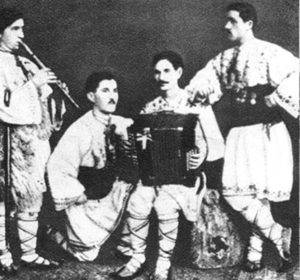

In Dumitru Dan’s story, he and three other Romanians were students in Paris. They decided that they should take up the challenge. Dumitru Dan was studying geography. He said the others were Paul Parvu, Gheorgh Negreanu, and Alexandru Pascu. They were all 19 years old. The four returned to Romania to get ready for their journey. They physically trained each day and learned other languages. They came up with the idea to perform while on the road and learned Romanian folk songs and dances to earn money along the way. They also learned to play the flute and accordion. Parvu and Pascu were the musicians.
Drumitru Dan’s story of his travels began on April 1, 1910. The four began their journey from Bucharest, Romania, in the rain. Their claimed route would not be on a path circling the globe. It would be a route north to south, east to west to the various continents and countries around the world. He said they each carried a pack that weighed about 18 pounds and were accompanied by a dog. At Vienna, Austria, they put on their first performances. They went through Germany and at the Denmark border were initially arrested as spies, but soon released. They went through the Scandinavian countries and then entered Russia, arriving at Moscow at the end of July 1910. Checking their mileage at that point, it was about 3,700 miles in four months. That was about a very tough 40 miles per walking day for at least 13 hours each day.
After another three months and 2,000 more miles, they were in Persia (Iran). Dumitru Dan said from Moscow to Tehran, they ate tea, eggs, bread and walked a minimum of 10 hours a day. They next headed into present-day Iraq, to Baghdad. The Arabs could not understand why they were walking instead of riding camels. “In vain did we explain the purpose of our walk. They nodded and they pitied us, believing us to be sick, poor, or greedy.” They went on to Jerusalem and then to Egypt and saw the pyramids.
Dumitru Dan said, “So far we had a hard road, the tropical heat was burning our face, and at our feet the sand was burning. At small intervals there came a large storm of sand that closed our way, and in other places surrounded us by the belt. Water was lacking everywhere and our supplies were running out. Rarely if I met a caravan, which supplied us.” While in the desert, they experienced a terrible sandstorm. “The dunes were fuming, metal sounds, fear filled the air. We couldn’t breathe. We threw ourselves in the sand and waited for about ten hours until it was over.”
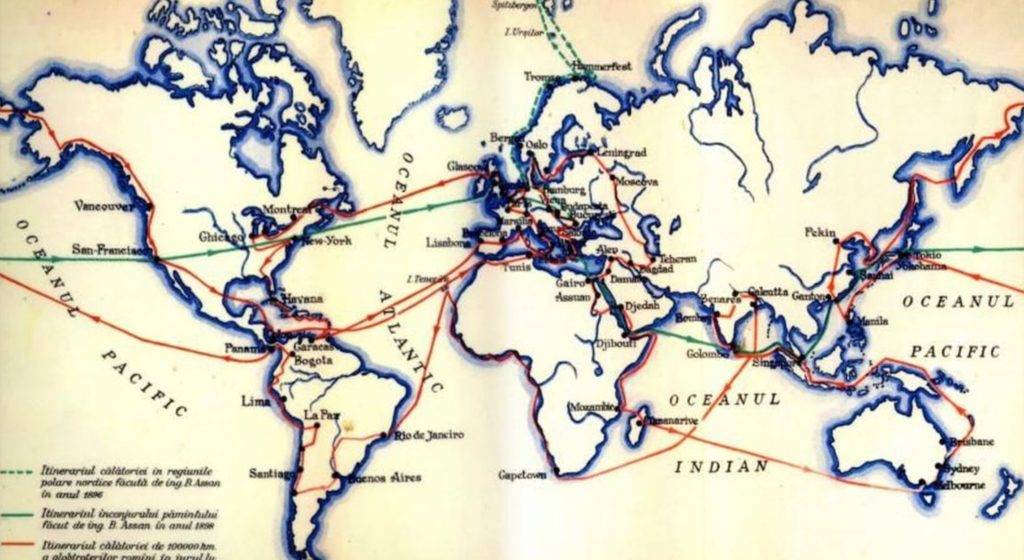

8,000 miles in six months? Not possible
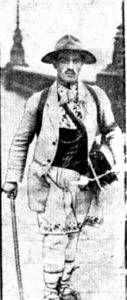

Checking their mileage and pace again, during the first five months of 1911, their walking route was more than 8,000 miles averaging about an impossible 100 kilometers on each of their walking days, across the hot sands of the deserts, through the thick jungles of Africa, and in the primitive outback of Australia with settlements many days apart. This sadly invalidates their walking claims for those months in 1911. It just wasn’t possible no matter how hard you wanted to believe it. If they visited the countries as Dumitru Dan claimed, they would have had to skip thousands of miles of walking.
From Australia, there wasn’t as much walking at first. They did a little in New Zealand, and then traveled as tourists, taking steamers to places like Java and Singapore. In India they only walked for 62 days. There, Dan’s story sadly stated that Pascu accidentally overdosed on opium and died on July 17, 1911. He did not.
Western Africa and South America – Not possible
Dumitru Dan’s story started to have large gaps but indicated that the remaining three sailed to South Africa. He claimed that they walked up the west coast of Africa, another totally impossible 7,000 miles in five months for more than 17,000 miles of walking in 1911 without any reported details of the more than 10,000 total walking miles in Africa. Analysis shows this did not happen. Assuming they actually did visit these African countries, travel was not by foot. It was just too far to be humanly possible in that very rugged, slow, and primitive area at that time.
Dumitru Dan’s story claimed that in January 1912, they arrived by ship in South America, at Rio de Janeiro, Brazil, where they observed “twisted streets, dirty markets, and ruined houses.” They had great success putting on their folk-dance shows in Rio and also gave lectures. He next claimed to do an impossible walk through the rugged and very sparsely settled South America, along a route of more than 10,000 miles in just a few months. In those years it was impossible to walk those countries, and across those high mountains, water-less plains, and thick jungles in a few months. It would have taken multiple years with much support from caravans. Their claim just didn’t happen. You must accept the fact that they were not walking these distances. If they were truly in South America, they were traveling by other means. But he never went there except for a very brief visit to Venezuela later in 1915. We will see later in 1914, he told a newspaper that he had not been to South America yet and visiting those countries was still in future plans. He never went to South America in 1912 and he inserted going there into his story decades later.
Casting more doubt that Dumitru Dan walked through South America is this fact: From February 3-15, 1912, a Dumitru Dan of the right age from Romania, was recorded as being on the ship President Grant that sailed from Hamburg, Germany to New York City.
Asia – He was not there
After South America, Dumitru Dan’s fictional story claimed that they steamed to San Francisco, California and then steamed across the Pacific Ocean for 27 days to Japan, then to Hong Kong and into China, claiming thousands of more miles of walking in 1912. While crossing a narrow mountain pass in the Nanling Mountains in China, Negreanu fell off a cliff into a creek breaking bones and incurring serious internal injuries. The other two pulled him back up and he was carried to a nearby village. He died the next day in a hospital. But don’t be sad, Negreanu likely never existed.
This story was fiction. There is no evidence for it. And as will be shown later, Dumitru Dan never went to Asia in 1912. Other globetrotters of the era also told false stories that their companions died so questioners would not seek witnesses.
Dan said that he and Paul Parvu went on to Beijing where they were robbed in a hotel. Dan received a harsh punishment for laughing during a Chinese ceremony and was lucky to not receive death. “Four Chinese people grabbed me and bound my neck, arms and legs in a double plank of wood, and I felt violent pain. With all my protests and my screams, the men exposed me to the sight of people, following the tradition of Chinese law. Some began to spit on me, and others kicked me. This hubbub torment lasted 12 hours.”
Russia, Siberia and Alaska – Not Possible
Dan’s fictional story told decades later said they went 1,000 miles to Vladivostok, Russia, and then went another impossible remote 6,000 miles to spend the winter of 1912-13 in eastern Siberia experiencing temperatures down to -30 F. Dumitru Dan then claimed that they walked over the Bering Strait in the spring where they came upon a Dutch ship in the ice just as they were out of food. They stayed a few days and replenished their supplies. They then continued to walk to Alaska. This story and all these miles in that short of time frame was fantastically impossible.
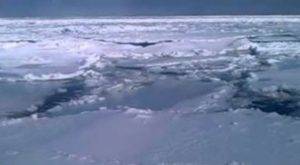

Crossing the Bering Strait on foot is extremely difficult, slow, and would have to be accomplished in the winter not the spring. In reality there is a strong current flowing north through the strait which usually creates large channels of open water making it an impossible journey. Dumitru Dan’s timeline was incredibly fast. Modern attempts to cross the strait have ended with helicopter rescues on the ice.
Dumitru Dan claimed that they then walked more than 1,600 miles in the snow across the very primitive Alaska wilderness where Parvu wounded his legs. “Many times, we were attacked by the Eskimos, throwing stones and pieces of ice at us.” Clearly, he didn’t understand that Alaska is not just ice and Eskimos. It is a wilderness with thick, impassible forests, with settlements hundreds of miles apart without connecting roads.
That walk in Alaska was impossible to make. With few roads, heavy forests, massive marshes, the distance would have been much further, more than 5,000 miles compared to Dan’s claim of 1,600. This was another obvious fabrication. Anyone who has been to Alaska knows how impossible that journey would be. Even today, in 2019, it is not possible to walk through Alaska on the route Dan claimed. Roads and trails do not exist. Towns to provide food and support are hundreds of miles apart and are reached by water or bush plane. One Alaska expert said, “while some maps might indicate the presence of trails, such as the Iditarod, those are almost always going to be winter trails that are totally unsuitable to travel in months with no snow cover.”
My analysis concludes that the entire China/Russia/Siberia/Alaska journey was fictional and the gullible have believed it. This tale also conflicts with what Dumitru Dan told the newspapers while in the United States in 1914.
Where Dumitru Dan actually was
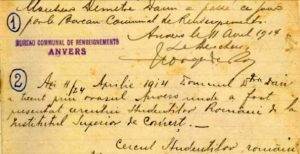

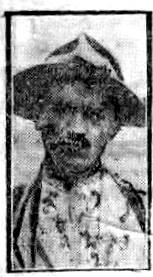

To the newspapers in 1914, Dumitru Dan clarified what actually took place in 1912-13 during the time his fictional story claimed that he was in Russia and Siberia. He said in 1914 that he had left his journey and went to take part in the 1912-13 Balkan War which delayed him for more than six months. He said that he spent four months fighting and two months in the hospital with an injured hand. He was very proud of his service in that war.
From 1913-1914, Dan was not in Alaska, Canada, or anywhere in North America as his story decades later claimed. In February 1914, documents show that Dan was in Paris, France, alone, visiting many organizations for ten days, collecting seals for some reason, probably starting his walk for the first time. Many years later, he said while there, that he met with the race organizers and found out that he and Parvu were the only two of the 200 still in the race. Of the race’s progress, he said that he learned that “half had left and returned to their countries, a quarter had settled in the countries through which they had passed, compelled by illness or giving in the hope of better living conditions at home, and of the rest nothing was known.” There is another big problem with his story, Parvu was not with him in Paris as he claimed. It will be explained where Parvu actually was.
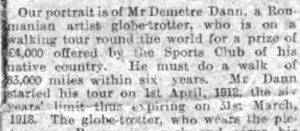

From March to April 1914, valid certificates show that Dan was in Belgium and then in the Netherlands visiting some organizations. In mid-April to May 1914, he was in England and in June he was in Scotland. He started to tell newspapers that he was on a walk. He said he was walking for 4,700 pounds put up by the Societe Francaise de Sport in Paris, France. He said he started his journey in 1912 instead of 1910 as he later claimed. He said he had only been walking through countries in Europe with no mention of Africa, Australia, South America, China, Russia, and Alaska. He had not been to those places.
Central America – Did not happen
Dan’s fictional story years later claimed that after Alaska, in 1913-14, that he walked south to “San Francisco, Acapulco, San Salvador, Managua, San Jose, Casablanca and Algiers,” a distance of more than 6,000 miles that would have taken multiple years and through thick jungles. Did he walk to Central America as he claimed? No, he did not. After serving in, and recovering from, the Balkan War, in 1913, he then started or restarted his walk in Paris, in early 1914. It is not understood why later in life he claimed that he went to Central America in 1914 when he did not.
London – He was there
In May 1914, Dan was actually in London England (not Central America). He was interviewed by reporters and stated that he was walking around the world, had started just 16 months earlier, and had covered only 3,000 miles. He announced that he was heading to America to walk. Reporters described him, “Dimitri wears his national costume, with its short petticoat and broad waistband. His footgear consists of cord shoes (opinci is the Roumanian word) common to all Latin countries.” Dan was alone. “He says he started his trip with a companion, who fell over a precipice near Mont Blanc and was fatally injured.” In Dan’s later fictional story, a companion died that way 10,000 miles away in the Nanling Mountains in China, not near Mont Blanc.
Canada – He was there!
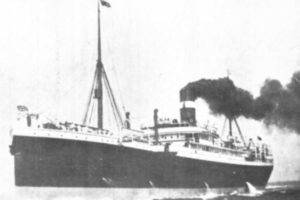

Ship passenger records show that Dan steamed from Glasgow, Scotland and arrived in Quebec City, Canada on the Grampian steamship on June 29, 1914. His fictional story included a silly account that he and Parvu were given free tickets on the ship because people were still afraid to travel across the Atlantic because of the sinking of the Titantic. But that tragic event occurred more than five years earlier. Paul Parvu was not on the Grampian passenger list and it is certain that he was not with him.
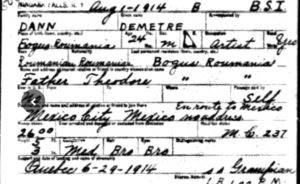

On July 28, 1914, Dumitru Dan was in Hamilton, Ontario, Canada, alone and claimed to the newspapers that he had walked 47,000 miles trying to win $20,000 from the Romanian Sporting Society. He only indicated that he had walked through all of Europe.
America – He was there
After a month in Quebec, and a 600-mile “walk,” on August 1, 1914, Dumitru Dan crossed the border into America at Niagara Falls with immigration record evidence. Parvu was not with him. On the immigration record, he said that he was an artist and was heading to Mexico. He would tell many newspapers and town officials that he was an artist. He also confirmed that he entered Canada by the steamship Grampian that arrived at Quebec City, June 29, 1914, from Glasgow, Scotland.


Where was Parvu?
Where was Parvu? Dan’s tale later in life said Parvu was always with him. He was not.
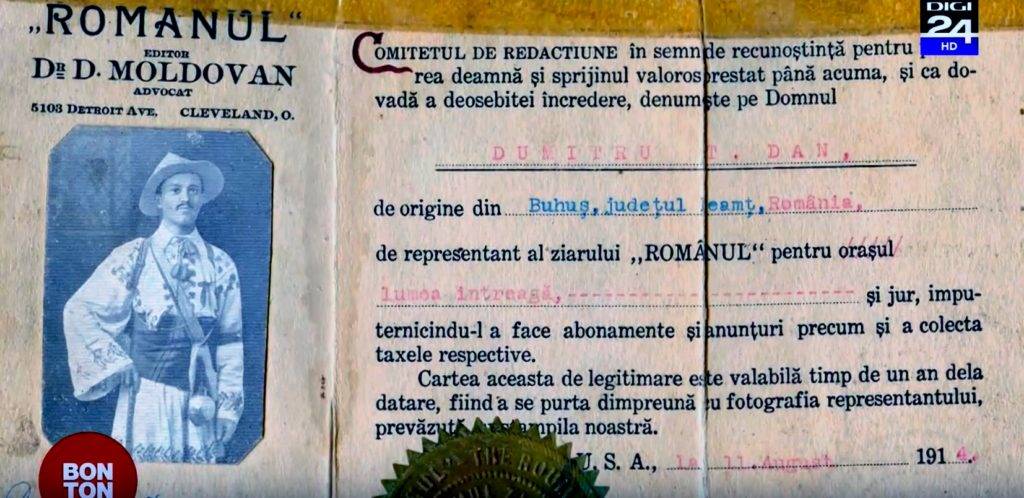

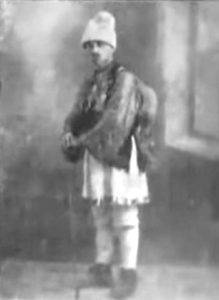

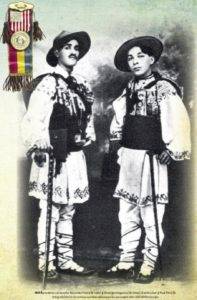

On August 25, 1914, he was in Jackson, Michigan. Paul Parvu was with him! A newspaper article revealed that Paul Parvu was from Cleveland, Ohio, not Romania, and only recently joined Dan in his journey. The truth is that Paul Parvu was born in Hungary in 1892 and immigrated to Ohio in 1907. He did not start with Dan in Romania, in a race, as Dan would claim many years later. Parvu was living in the United States and was three years younger than Dan. He spent only about three months with Dumitru Dan while doing a big loop in the Midwest United States.
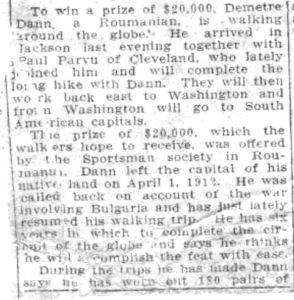

Dan stated to newspapers again, that he left his journey due to the war involving Bulgaria and only just lately had resumed his walking trip. He said that he had been shot in a finger and elbow and was ill for six months. He also said in Michigan that he was on the way to Washington, D.C. and then to South America to visit the capitals there. But his story in later years said that he visited South America in 1912. He had not been there as of 1914 according to Dan’s 1914 words.
A month later, in September 1914, the two were in Chicago, Illinois. Dumitru Dan claimed to be wearing his 183rd pair of moccasins and that he had walked 16,650 miles, but a few months later he claimed he was at 60,000 miles. The number of miles he claimed to have walked was constantly changing.
Walks for a Wager, not in a Race
Further evidence was revealed that the alleged Touring Club of France competition was a farce. Dumitru Dan gave a totally different story in Chicago in 1914, to the newspaper reporters. He said that he was walking on a wager between several rich Bucharest citizens and that he must visit the capitals of 54 countries and walk 63,000 miles. The terms for his walk were totally different from the fictional version he would give many years later about a race.


According to newspaper stories and Dumitru Dan’s surviving certificates, the two arrived in Akron, Ohio, heading east again. There, he again changed the purpose of his walk. He said that he had been sent out by the National Romanian Association, a sporting organization. From Ohio, he said they were going to Washington D.C., to Florida, Mexico, Panama, and back to Europe. Why would he head back to Mexico and Panama if they had already been there as Dumitru Dan claimed in later years?
Started in 1912, not in 1910
As the two traveled through America, Dan consistently told American newspapers in 1914 that he started his walk on April 1, 1912, instead of 1910, as stated in his fictional account. He changed his starting year to 1910 in stories told in the 1970s. This is proof that his entire 1910-1913 story was fiction. He never walked in Africa, Australia, South America, Asia, to Alaska, and down the west coast to Central America. He never had two companions that died in 1911 and 1912.
![]()
![]()
Also, as they neared New York, he started to tell people that Parvu had been walking with him all the way from Romania, which evidence shows was false. “They are dressed in the Romanian costume of 1,000 years ago and wear leather sandals of great durability. At Brooklyn, New York, Dumitru Dan said, “This is the first time anyone ever tried to walk around world in this manner. The distance is 63,000 miles and we’re therefore sure of establishing a record. We’re not married because we think a man should see something of the world before taking up the duties of matrimony and rearing a family. When we get back to our native land, we have two nice girls waiting for us and we’ll marry them.” This was of course false because Parvu lived in Cleveland, Ohio. Note that he made no mention of a race. He never did to American newspapers.
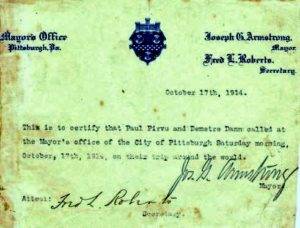

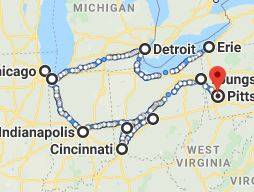

Parvu Death in Florida death? No
Only three weeks later Dan was seen about 1,000 miles away in Florida, after a fairly unbelievable journey on foot, averaging about 40 miles per day and he only collected certificates in a couple cities along the way. In his fictional story decades later, he said that at Jacksonville Florida, Parvu quit the journey there, but Dan continued on. He said that Parvu’s injured legs from Alaska developed gangrene, were eventually amputated, and that he died in May 1915.
Parvu did not die in Florida. He did not go to Alaska or Florida with Dumitru Dan. Parvu returned to Cleveland, Ohio and lived on. He applied for U.S. citizenship in 1917 and served in World War I in 1918-19, fighting in France. In 1921 Parvu was still living in Cleveland and later moved to Minnesota where he lived in 1930, was married and worked as a painter and decorator. He died in 1938. Dan also made up the stories of the deaths of his other partners.
Dan’s fictional story told decades later stated that the dog that started with them in Romania also quit the journey in Jacksonville, Florida, and that it was emotionally hard on him. There is absolutely no way that the dog could have traveled all that way with him for 60,000 miles in five years. The dog was never mentioned in American newspaper articles or seen in pictures published there. The dog also would not have been allowed on most of the steamers that he claimed to travel on. They imposed strict immigration restrictions on pets at that time that required quarantines, or the pets were confiscated and put down at destination ports. The dog story was a silly piece of fiction.
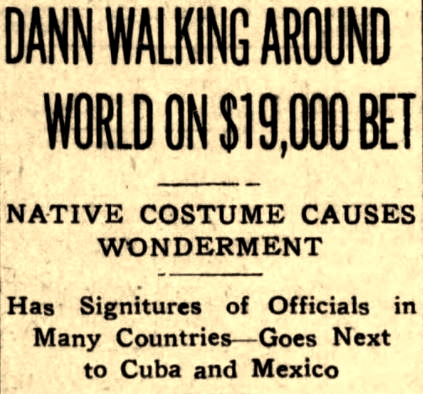

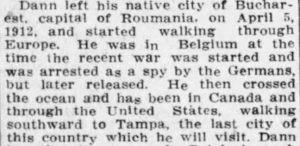

Dumitru Dan said that the reason for his walk was for a scientific purpose, not a contest, and that he made a living selling postal cards of himself. He carried a book with certificates and letters with signatures, but they were only from Europe, Canada, and America, not all those other places that he would later claim he went to earlier.
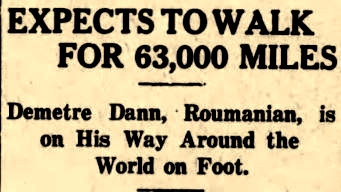

Caribbean – He was there
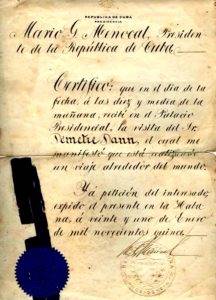

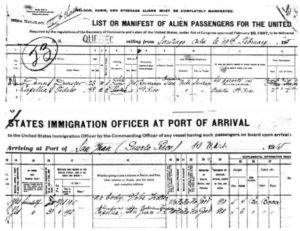

On January 18, 1915, Dumitru Dan arrived in Havana, Cuba. “Hundreds of people were waiting for me; many sportsmen and journalists would follow me through the stay.” From there he said that he went to Haiti, Jamaica, Puerto Rico, Barbados, and brief visit to South America in Venezuela by ship where he met with the president.
On March 19, 1915, Dumitru Dan sailed from Cuba on the S.S. Quebec, arriving the next day in Puerto Rico. He appeared on the passenger list told them his profession was “globe trotter.” In a certificate obtained there he said he was seeking to win “a prize of $20,000 offered by the Roumanian Sporting Society.”
In Haiti on March 1, 1915, he said to a newspaper for the first time that he had traveled to Norway, Russia, Siberia, Japan, China, India, Arabia, Africa, Madagascar, and then returned to Europe, and walked there. A fictional story had started to form in his mind, exaggerating his true journey.
Return to Europe – He was there
From Venezuela, Dumitru Dan sailed to Lisbon, Portugal in August 1915 and then certificate evidence shows that he traveled through Spain. At Madrid, Spain, he said to newspaper reporters that he had walked 96,000 kilometers. He would give that same figure the next year so apparently he stopped his walk soon after arriving back in Europe. He also told the Madrid newspaper that when he was on ships, that he walked the same number of miles as the ship traveled on the deck, which was of course impossible, because the steamers traveled up to 17 mph around the clock.
Dan’s fictional story stated that as World War I was breaking out, he was at Malta on a ship that was torpedoed by a German submarine and he survived. He said incredibility that he was later arrested at Greece as a spy and taken to London for investigation. How can people believe his story? His continued fictional story said he reached Romania on March 29, 1916, just two days before the six-year deadline, but he still needed 4,000 more kilometers. He said he had been forced to stop because of the war, had served for Romania during the war, and received a medal for his service.
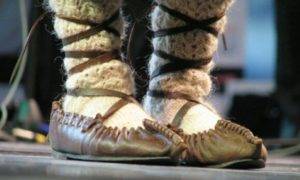

Dan claimed that on July 20, 1923, that he finished his journey in France, received the prize of 100,000 francs, and was given the title of world champion. He declared many years later that he had crossed five continents, over three oceans, through 76 countries, in more than 1,500 cities, and wore out 497 pairs of shoes.
There is a big problem with his finishing timeline. Looking at the certificates he collected for 1923, shows that he didn’t start “walking” again until October 1923, when he traveled to many towns in Italy collecting stamped documents for three months. It didn’t match the story given many years later that he finished in July 1923. No newspaper stories have been found in 1923 about his alleged finish and victory. It never happened.
A summary of Dumitru Dan’s claim
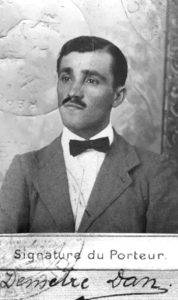

Let’s examine the likelihood that Dumitru Dan walked 60,000 miles between 1910-1916. We know from his own words to newspapers in 1914, that he took about a year off for the Balkan War. Thus, 60,000 miles in five years is 12,000 miles per year, 1,000 miles per month, and 33 miles every single day without any days off. Surviving certificates show that he did take many days off. Thus, the miles per walking day would have to be incredibly huge, closer to 50 miles per walking day through thick uninhabited jungles and across incredibly hot deserts. No runner in the modern era has been known to legitimately log more than 10,000 miles in a year. Dumitru Dan’s 62,000 miles or 100,000 kilometers of walking did not happen.
On his journey, Dumitru Dan claimed to walk most of South America south to north and North American from the Bering Strait to Panama south to north. His fictional story’s timeline total for all these 14,000 miles was accomplished in about one year without much difficulty, which would be averaging about 50 miles on walking days, across road-less Alaska, Central American jungles, and impossible South America. It is amazing that people have been so gullible believing this journey. In the 1980s British Explorer George Meegan took nearly seven years to do a similar Americas end-to-end journey and he is recognized as the world’s first person to traverse the entire Americas. Dumitru Dan did not go to the Americas in 1911-1913 and admitted he did not in 1914. He didn’t even pretend to do that portion of the walk. He made up the impossible story later in life.
How much did he actually walk? We wish we knew. I estimate that he walked no more than a total of 5,000 miles, trusting that he did walk between towns in 1914-1915. Unfortunately, there were no news stories about people who witnessed that he was walking between towns, so it very likely that he walked fewer than 1,000 miles total.
Beginning in 1978, The Guinness Records included the false story that Dumitru Dan “was the only man of 200 entrants to succeed in walking 100,000 kms (62,137 miles) in a contest organized by the Touring Club of France.” In 1978 there was no way for the Guinness people to validate the claim, they just trusted the story that was submitted to them, which was only from Dumitru Dan’s story told late in life.
Life after the walk
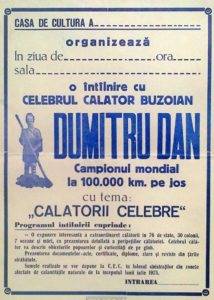

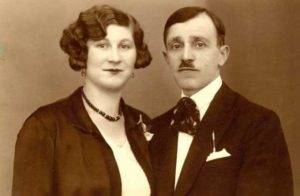

Dumitru Dan’s daughter reported that he died poor at the age of 90 in 1979. “In the Cemetery of the Heroes of Buzau, near a trash bin always full, there is a plot surrounded by a rusty wire fence, at the head of which is a nearly fallen iron cross; on it, without any other explanation, a name: ‘Dumitru This 14.VII.1890 – 4.XII.1978’”.
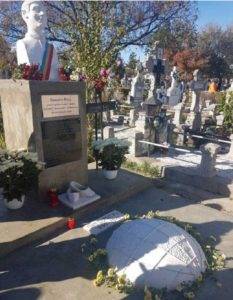

Dumitru Dan didn’t leave very much behind from his adventure to his stepdaughter. She only had a handful of photos from his journey. She was sorry that the world had forgotten him. But as blogs and news stories about him started to appear after 2010, he became a local hero. In 2017 a new impressive grave monument was created to honor him.
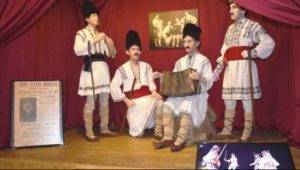

The local museum in Buzau Romania acquired hundreds of his documents from 1914-15, 1923, and later. They digitized the documents, and they can be examined online. None of his certificates mentioned a race or competition, they only mentioned that he was on a trip around the world, visited offices and put on lectures for organizations. Many photos were included, but they were simply photos that Dumitru Dan photographed from a published book he probably found in a library. There are no photos from his journey except in newspaper articles. Sadly, the museum, at much expense (an estimated $85,000), created an elaborate section promoting Dan’s fabricated journey, hoping to increase tourism to Buzau. It would have been wise for them to first validate his globetrotting story.
In 2019 an endurance bicycle race was organized in Buzau, Romania in Dumitru Dan’s honor by the Buzau County Museum that awarded the “Dumitru Dan Trophy.”
Ionuț Sociu a reporter and playwriter from Romania independently also discovered Dumitru Dan’s tale and ran into many of the same problems with it. He researched it deeply in Europe, visited and interviewed members of Dan’s family and also discovered this article which helped him fill in many of the holes that he also discovered. Read his fascinating and sad 2021 article: Dumitru Dan, the Legendary Romanian Globetrotter that Never Was.
Conclusion
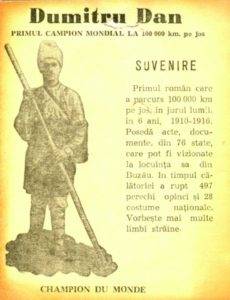

No evidence has been found that the Touring Club of France was ever involved in competitions to walk around the world and Dumitru Dan never mentioned the organization to the many newspapers during his 1914-1915 journey. He added that to his story in later years. Based on the 1914-1915 newspaper stories found and his surviving documents, it is concluded that Dumitru Dan actually started his true walk alone in Paris, in February 1914, and continued walking through 1914 and 1915, but only walking in Europe and North America. No, he didn’t have those companions with him in 1910-1911 and they didn’t die in the ways he claimed. We don’t know who is truly in the picture of four. He did inspire generations with his fictional story including tales of fantastic places he never visited. Dumitru Dan lived an otherwise honorable life as a teacher. We will never know the amount of legitimate walking he accomplished.
Konstantine Rengarten of Latvia likely was the first in 1898 to walk around the world.
Nearly all the globetrotters of that time embellished and overstated their accomplishments. Many would start off, realize what they committed to was much harder then they realized, and instead of quitting, they would skip over huge sections but tell stories that they walked it. Ultrarunning Historian, Andy Milroy added, “Starting off with unrealistic naïve expectations, the participants gradually compromise, take short cuts, which is edited from the accounts and possibly from their memories. From my experience they often believe what they are saying. They become part of their fictionalized narrative.”
F. Consigny of Paris, France
In January 1904, F. Consigny, of Paris France arrived in Philadelphia, Pennsylvania claiming to be leading a five-year foot race around the world that started in Paris, in March 1899. He said that the race was organized by the Touring Club of France with 14 starters. Consigny declared that he was 2,000 miles ahead of the second-place competitor who was somewhere in Austria.
Their route was said to be from Paris to Southern France, by steamer to Cape Town, South Africa, then to Spain, through Turkey, Russia, Germany, Italy, England, etc. in a very unorganized route. He said that he had taken a ship from Liverpool to Philadelphia and was on his way to San Francisco and then to South America. The first-place prize was $5,800.
That was the only time Consigny was found in a newspaper article. He was an obvious fraud, but because the article about him was republished in other papers, the idea of a globetrotting foot race sponsored by the Touring Club of France was established in the minds of readers, ready to be copied by others.
Gustave Laurent – French globetrotter
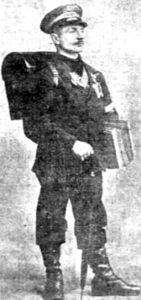



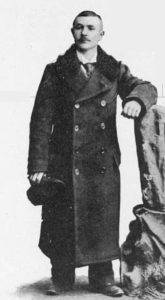

He spent the spring of 1905 obviously riding trains, zigzagging through the Midwest and then reaching Grand Junction, Colorado in July 1905. He made record speed to Salt Lake City and admitted to the newspaper that he freely also rode on freight trains and did so between Grand Junction and Salt Lake City. Why did anyone pay attention to him?
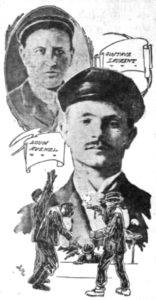

Thus, this was the second bogus story that the Touring Club of France was putting on a walking around the world competition. Each of the races didn’t happen.
Henri V Mosse – French globetrotter
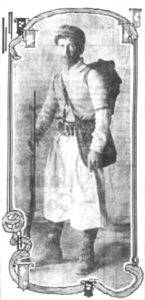



Mosse said that eight contestants started. He sadly explained in Hawaii that six of the contestants were dead, “given in to the hardships of the trail or had met with violent deaths from the savage tribes met in their wanderings.” He said that the only other remaining contestant was somewhere ahead of him in the United States.
By the time he reached San Francisco, California by steamer on June 22, 1907, the details of his story changed dramatically. He now said the eight all left from Lyon, France together, instead of also from London and that they traveled in pairs. There were four Englishmen and four Frenchmen. “We all left Lyon on June 14, 1904. Two of the men went by way of America, two by the Australian route, two went at once into Africa. My traveling companion and myself started across Europe”




In July, 1907, Mosse somehow crossed the hot desert to Tucson, Arizona in only ten days, averaging an impossible 55 miles per day. His story details changed. He said that the remaining contestant was an Englishman, Doherty, who was in Africa, seven months behind.
There was a gap in news coverage from August 3rd 1907 in Tucson, Arizona until December 1, 1907 in New Orleans, Louisiana. Was Mosse still walking during that time? Actually, no. My research discovered that on September 26, 1907 he boarded the sailing ship Louisiana at Le Havre, France! He had actually abandoned his fake walk for a few months and made a quick trip home to France and then sailed to New Orleans to continue his scam. He sailed on the ship for two months and arrived at New Orleans on November 28, 1907. Three days later, the New Orleans newspaper announced that he was giving a lecture that night.
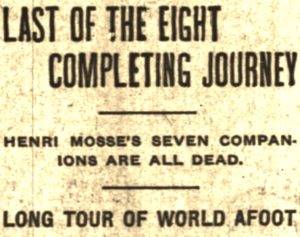



Instead of steaming to France to finish his “race,” a month later, Mosse showed up in Montreal, far out of his way. Several years later he explained that he went to Quebec City, to return to France. “Mosse met with the greatest hard luck. The vessel in which he was to sail was delayed for twenty-four hours, and he arrived in Paris one day too late to win the handsome prize. He reached the French capital on June 9, 1908.” This is strange because he was supposed to finish at Lyon, France, 280 miles to the south. He must have forgotten where the finish was.
Clearly, looking at the evidence, Mosses’s globetrotter race was a farce. He was the only source that such a race existed involving the Touring Club of France. Mosse was just another of the long line of “around the world on foot” frauds, traveling on generosity, gaining money and fame telling fictional stories.
Thus, the third alleged Touring Club of France race never happened. You would think that would be that last one, but there was one more.
Arthur Thibaudeau – Canadian Globetrotter
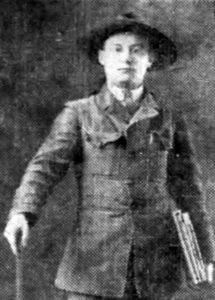

Thibaudeau claimed to start from Vancouver Canada and had already traveled across America, Mexico, Great Britain, Scandinavia, Europe, and India. He had just taken 17 months off for injury but had still managed 55,000 miles on foot in seven years averaging nearly 8,000 miles every year. He said he had to finish on May 1, 1925 in Paris, France.
Thibaudeau told many wild fictional stories of his journey that are not worth repeating in print. Just like Dumitru Dan, his story had many problems. Over the years he was never seen away from Canada and the northeastern United States. In 1914 he showed up in Boston, Massachusetts claiming to be walking on a wager between some French millionaires, not as part of a race. He said that he started in Vancouver in 1913 (not 1912) for a 10-year jaunt. A year later, in 1915, he again showed up in Massachusetts, now claiming he needed to cover 85,000 miles and had already walked 18,000 miles. In 1919 he was in Canada and his story changed to the 1912 $100,000 competition. In 1916 he showed up with his wife in Cornwall, Canada, claiming that they were both walking around the world and had walked 4,000 miles.
Thibaudeau was found in US/Canada border crossing records multiple times in 1919 and 1920 giving an occupation of globetrotter, but was never found in ship passenger records to or from Europe. In 1920, articles about him were printed internationally and his mileage and race requirements were ever-changing. He was last heard from in 1921, at Saskatoon, Canada, with a new wife walking with him, claiming to be heading for Japan, He said he had 5,000 more miles to go.
Thibaudeau invented the Revel Athletic Association of Paris. There was no such organization. He was just another in a long line of globetrotting frauds. In 1923, “the around the world race” scam spread to automobile races as Al C. Reed showed up in Alabama claiming to be finishing his third trip around the world in a automobile competition put on by the bogus Revel Athletic Association of Paris.
Read all parts:
- Part 1 – Around the World on Foot (1875-1895)
- Part 2 – Around the World on Foot Craze (1894-96)
- Part 3 – Around the World on Foot (1894-1899)
- Part 4 – Around the World on Foot – The Bizarre
- Part 5 – Races Around the World on Foot – Dumitru Dan
- Part 6 – Walking Backwards Around the World
- Part 7 – Dave Kunst – Walk Around the World – 1
- Part 8 – Dave Kunst – Walk Around the World – 2
Sources
- The Courier-Journal (Louisville, Kentucky), Jan 31, 1904
- The Tatler (England), Sep 21, 1904
- Preston Herald (England), Sep 24, 1904
- The New York Times, Oct 30, 1904
- Evening Star (Washington D.C), Nov 21, 1904
- Louis Post-Dispatch (Missouri), Nov 27, 1904
- The Marysville Advocate (Kansas), Apr 13, 1905
- The San Francisco Examiner (California), Nov 1, 1905, Jun 25, 1907
- The Californian (Salinas, California), Jul 8, 1907
- The Sacramento Star (California), Nov 2, 1905
- Morning Register (Eugene, Oregon), Jan 24, 1909
- The Honolulu Adviser (Hawaii), Jun 9, 1907
- Los Angeles Times (California), Jul 21, 1907
- The Tucson Citizen (Arizona), Aug 3, 1907, Feb 28, 1908
- The Comet (Johnson City, Tennessee), Aug 8, 1907
- The Indianapolis News, Jan 22, 1908
- Hartford Courant (Connecticut), Feb 27, 1908
- Vancouver Daily World (Canada), Nov 11, 1910
- The Billings Gazette (Montana), May 31, 194
- The Vancouver Sun (Canada), Jun 3, 1914
- Hamilton Times (Ontario, Canada), July 28, 1914
- The Buffalo Times (New York), Aug 3, 1914
- The Indianapolis News (Indiana), Sep 5, 1914
- The Patriot (Jackson, Michigan), Aug 26, 1914
- Akron Evening Times (Ohio), Oct 6, 1914
- Detroit Free Press (Michigan), Oct 9, 1979
- The Pittsburgh Press (Pennsylvania), Oct 14, 1914
- Brooklyn, Citizen (New York), October 30, 1914
- The Tampa Tribune (Florida), Jan 8, 1915
- Passenger and immigration records on Ancestry.com
- Dumitru Dan’s fabulous trip: 100,000 kilometers on foot
- Quality press: the adventure of the four Romanians reconstituted by Gazeta Sporturii
- ROMANIAN DUMITRU DAN: MEET THE FIRST MAN TO WALK AROUND THE WORLD
- The fabulous journey around the world of Dumitru Dan, the globe-trotter in opinions who entered the Book of Records
- DUMITRU DAN, THE FIRST ROMAN GLOBE-TROTTER, NOW HAS A FUNERAL MONUMENT DUE TO HIS NAME, IN THE CUSHION OF THE HEROES IN BUZAU
- Madrid, Spain, Newspaper, August 1815, La Prensa
- Dumitru Dan’s historical documents
- The Leader-Post (Reginia, Canada), Jun 25, 1920
- The Boston Globe (Massachusetts), Mar 13, 16, 1914
- The North Adams Transcript (Massachusetts), Mar 15, 1915
- The Gazette (Montreal, Canada), Aug 18, 1916
- Star-Phoenix (Sakatoon, Canada), Dec 16, 1919
- Saskatoon Daily Start (Canada), Feb 28, 1921
- The Bermingham News (Alabama), My 27, 1923

